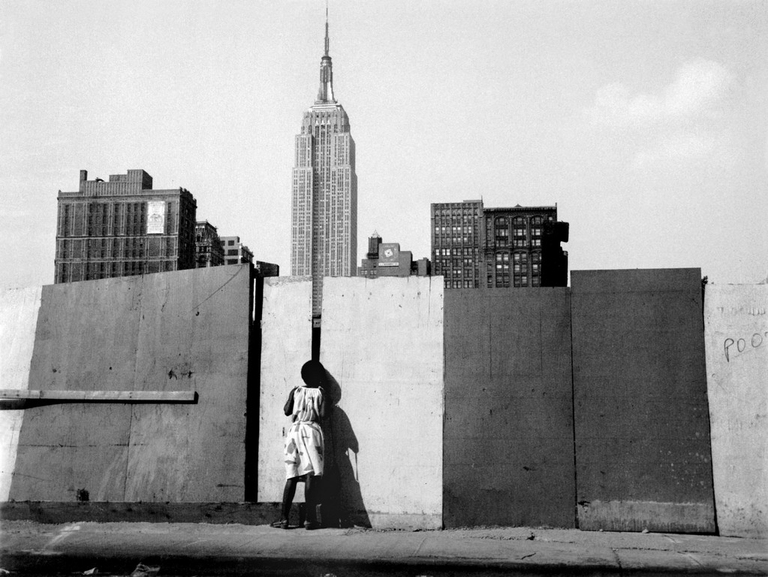
Protests against extradjudicial killings at the hands of police were attacked, further propagating a climate of impunity and fear in Bangladesh.
On the 50th anniversary of 1968, a year of social and political unrest, the international photo agency Magnum explores the meaning of freedom through the classic and contemporary works of its photographers.
We, like all living beings, are inherently free. But social and historical factor, as well as environmental constraints, change the way we relate to it. Many people perceive freedom as a simple word they just take for granted; others as a deep, philosophical idea they long for their whole life. Someone has fought for it and found a new life in it, while others are still fighting for it or lost their lives pursuing it. Over the course of history, freedom has always been the underlying, common thread of humanity’s development and the lack of it, with the consequent quest for it, sparked some of the most significant events.
In modern history, 1968 with the escalation of social conflicts around the world represented a turning point for many of the freedoms we light-heartedly enjoy nowadays – from the freedom of thought and expression, to the political, religion and sexual freedom. Fifty years on, the internationally renowned photo agency Magnum Photos has decided to explore the definition of freedom through its photographers’ classic and contemporary works. Embodied either by students, women, black people, children or prisoners, the sense of freedom permeates Magnum photographers’ images, both in their personal approaches and in the subjects they document.
Ever since Magnum Photos was founded in Paris in 1947, its photographers have been witnessing and documenting the historic events, while bearing a message that could be of inspiration and reflection for others. The four founders and pioneer photographers who started the first cooperative agency are Henri Cartier-Bresson – photojournalist who was dubbed “the eye of the century”; Robert Capa – photojournalist who covered five wars including the Spanish civil war, the second Sino-Japanese war, the second world war in Europe, the Arab-Israeli war in 1948, and the first Indochina war; David “Chim” Seymour – also known for his project that documented the plight of children in the aftermath of the Second world war together with UNICEF; and George Rodger, known for his works in Africa and for documenting the mass deaths at Bergen-Belsen concentration camp at the end of the Second world war.
“More recently, images from the migrant crisis have contributed to our understanding of the changes wrought by conflict, climate change, and socio-political upheaval,” writes the photo agency. “The free movement of people is far from a reality, and the impact of man on the landscape will inevitably impinge upon the freedom of many”. In this sense, the privileges of many shouldn’t lead to unconcerned behaviours with unavoidable consequences that fall on the most vulnerable and hinder their yet hardous path to freedom.
Siamo anche su WhatsApp. Segui il canale ufficiale LifeGate per restare aggiornata, aggiornato sulle ultime notizie e sulle nostre attività.
![]()
Quest'opera è distribuita con Licenza Creative Commons Attribuzione - Non commerciale - Non opere derivate 4.0 Internazionale.
Protests against extradjudicial killings at the hands of police were attacked, further propagating a climate of impunity and fear in Bangladesh.
We, the people is Survival’s 2020 calendar, which features the winners of the photography contest showcasing images of the world’s indigenous peoples.
Nonostante fame, povertà e violenza le donne del Sud Sudan portano avanti la propria vita con dignità. Only a woman è il reportage che mostra tutta la loro forza.
As per tradition after 12 years India held Mahakumbh, the world’s largest spiritual congregation that has been attracting pilgrims from across the globe.
Workers in tea gardens of West Bengal, India, that produces Ctc tea for domestic consumption complain that they have been devoid of basic facilities while political parties make hollow promises during every elections which are never fulfilled.
A father and his kid trying to cross the barbed wire that serves as material border between two countries, Hungary and Serbia. This is Hope for a New Life, photo taken on 28 August 2015 and winner of the 2016 World Press Photo Contest. Considering that the protagonists of the picture are Syrian, we understand the added
Out of Tibet is a lovingly compiled collection of photographs portraying members of the Tibetan diaspora around the world. It is fruit of over a decade’s work by Albertina d’Urso, an Italian photographer specialised in social and humanitarian reportages – including Welcome to Compton, snapshots of life in one of Los Angeles’s roughest neighbourhoods which won
Jo Farrell, award-winning photographer and cultural anthropologist, has been documenting the last surviving Chinese women with bound feet since 2007. Her project, Living History, was borne out of the desire to record the dying tradition and has culminated in the publication of a book featuring photographs of and interviews with women with “lotus feet”. Women
The American stock photo agency Getty Images launched on Monday 10th February the Lean In Collection in collaboration with the non-governmental organisation Lean In created by Facebook Chief Operating Officer Sheryl Sandberg. With more than 2,500 pictures and the promise to add more every month, the aim of this new initiative by Getty is to








